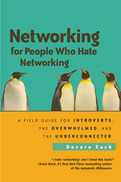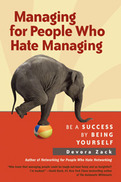BK Blog Post
Five Lesser-Known People Who Disobeyed Protocol
 Posted by
Jeevan Sivasubramaniam,
Vice President, Editorial,
Berrett-Koehler Publishers Inc.
Posted by
Jeevan Sivasubramaniam,
Vice President, Editorial,
Berrett-Koehler Publishers Inc.
In Ira Chaleff’s latest book, we learn about the importance of intelligent disobedience—the act of refusing a direct order or mandate on ethical grounds, personal beliefs, or to avoid potential danger and damage to oneself and others. History is full of people who said “No!” The one who comes to mind most readily is, of course, Rosa Parks.
But there are many unsung heroes who disobeyed protocol or orders based on their personal beliefs. Here are just five you may not have heard of:
1. Stanislav Petrov: At the height of the cold war, on September 26, 1983, Stanislav—then the duty officer at the command center for the Russian nuclear early-warning system—was alerted that U.S. missiles had been launched. Protocol dictated that he immediately inform his supervisors who would then most likely launch a counter-attack. However, Stanislav decided that it was a false alarm (which it was) and intentionally did not inform his superiors, thereby possibly averting full-scale nuclear war. He was not rewarded for his actions (since the event demonstrated how bug-riddled the Soviet warning system was and embarrassed his superiors). Instead, Stanislav was re-assigned to another post, then forced to retire early.
2. Hugh Thompson, Jr.: In the infamous My Lai Massacre during the Vietnam War, Thompson and his helicopter crew stopped a number of killings by threatening and blocking officers and enlisted soldiers participating in the bloodbath from reaching Vietnamese civilians. They also helped to safely guide groups of Vietnamese civilians away from the advancing U.S. troops and made sure they were evacuated by air. Despite testifying against twenty-six officers who were responsible for the massacre, all of the accused were acquitted or pardoned while Thompson was ostracized by both the military and civilians for his actions. He remained in the army though he suffered severe psychological trauma.
3. Claudette Colvin: Few people know about Claudette, but she refused to move to the back of the bus and give up her seat to a white person nine months before Rosa Parks did. And Claudette was only 15 at the time. The bus driver ordered her to get up but she refused, stating that she had paid her fare and so it was her constitutional right to sit where she wanted. She was arrested and led off in handcuffs. Why Claudette never gained recognition is not a mystery—she says that she was “too young” and didn’t quite fit “the middle-class Black image” the way Parks did.
4. Miep Gies: Many know of the tragic story of Ann Frank but few remember the individuals who helped to protect the Franks. Map Gies and her husband helped to hide the Franks from the Nazis during a time when doing so meant a death sentence. For two years she risked her life daily to obtain provisions and care for eight people. Miep also worked with entire networks of others who provided shelter and services to various Jews. Even afterwards, she was the one who safeguarded the now-famous diary which she placed in Otto Frank’s hands after he returned following the war.
5. Bayard Rustin: Most people don’t even realize that Rustin was one of the architects of the civil rights movement and a close confidante of MLK, Jr. who also organized the March on Washington, the first Freedom Rides, and the Montgomery Bus Boycott. Rustin rarely pops up in the common discourse around civil rights and social justice because many—including his fellow activists—did not wish to publicly acknowledge the contributions of an openly gay man. Since a lot of the churches involved in civil rights weren’t very accepting of homosexuality, Rustin was continually challenged by the very people he sought to lead to justice. Rustin was also a socialist, which did little to enhance his reputation with church leaders who saw him as an atheist and sinner. Still, Rustin did not care, and disobeying the wishes of many leaders, continued to lead civil rights movements well after MLK’s death.






